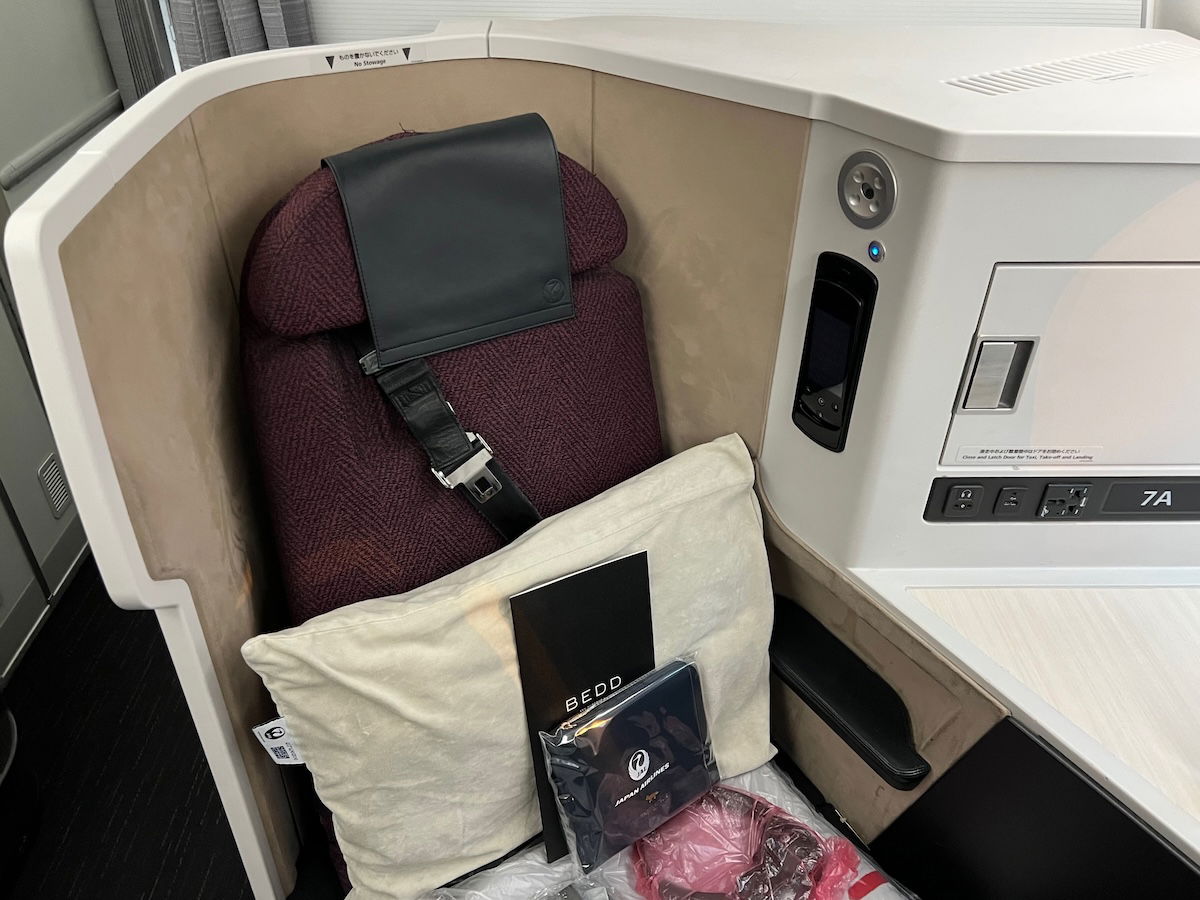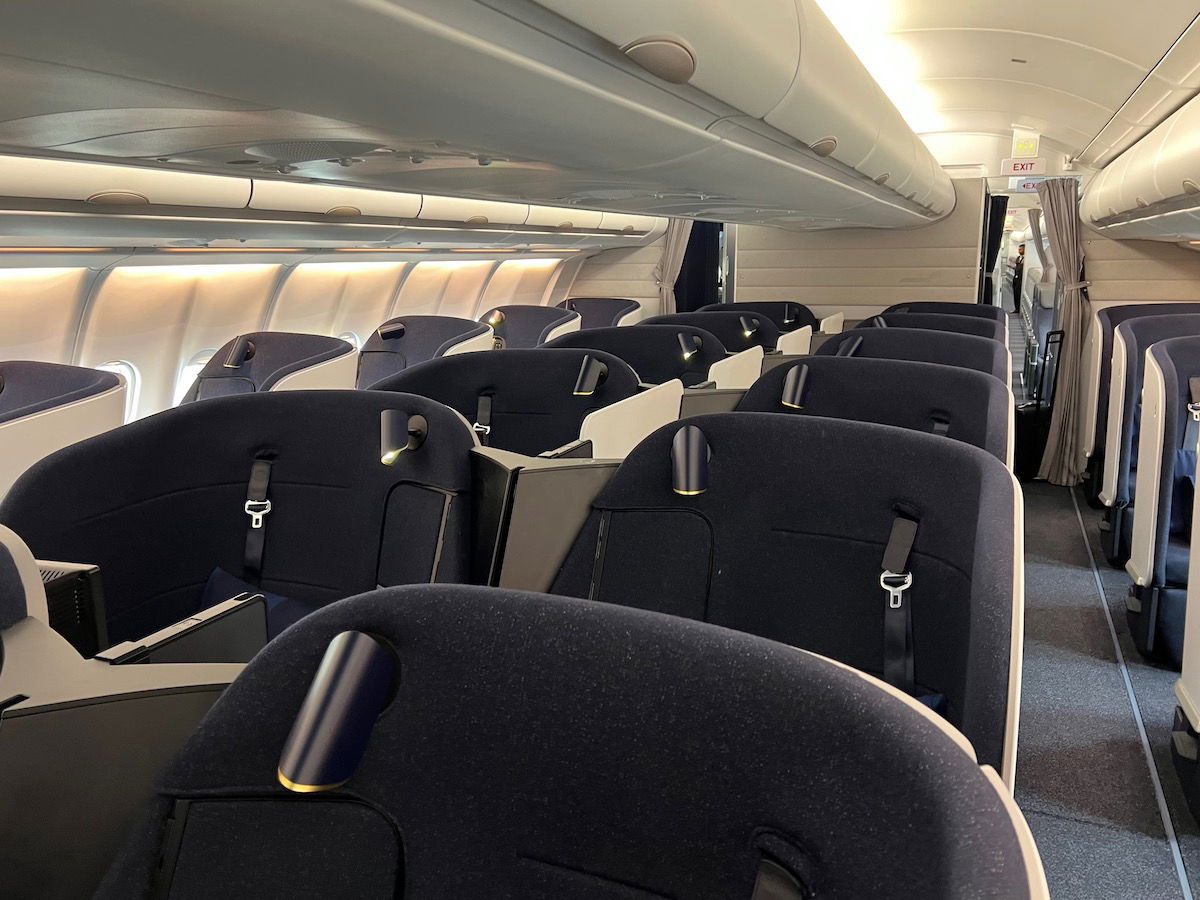OMAAT reader Paul asked an interesting question, which I figured would be fun to address in a blog post. Why do some first and business class seats on airplanes have three-point seatbelts (that go over your shoulders), while others don’t? Let’s address that…
In this post:
Premium airplane seats with three-point belts
For the most part, airplane seats simply have lap belts, which are much less restrictive seatbelts than you’ll find in cars. While cars typically have three-point belts that you wear over your shoulder, it’s rare to find that on airplanes. Well, the exception is in some first and business class seats, which do have a shoulder belt. So, what’s the logic for this, and why is it required in some premium seats, and not others?
The Federal Aviation Administration (FAA) in the United States has a “16g rule,” as it’s called, requiring that certain crashworthiness standards are met, in the event that there is an emergency. This policy is based on research, accident data, and analysis, and is intended to provide increased protection for passengers in impact-survivable accidents.
For most kinds of seats, shoulder belts aren’t required, due to how aircraft cabins are configured. For example, in economy, the intent is typically that the soft seat back in front would “absorb” some of the impact of an accident.
However, in premium cabins, it’s a different story, and that explains why you’ll sometimes see shoulder belts at certain seats. For example, this is most common with seats that aren’t fully forward or rear facing, like herringbone or reverse herringbone seats.
This is because if there’s a sudden deceleration and you’re sitting at an angle to the direction the aircraft is traveling, your body could move differently, in a way that could increase danger.

However, you’ll also sometimes find shoulder belts in fully forward or rear facing seats. This is typically for cabins where the impact couldn’t easily be absorbed in the event of a sudden deceleration. For example, if you’re in a hard shelled seat where you could otherwise easily hit your head on a hard surface, a shoulder belt might be needed.

Airbag seatbelts are used as an alternative
Now, you might be thinking to yourself “but I’ve flown in a reverse herringbone seat without a shoulder belt, how is that possible?” There’s actually an alternative to the three-point belt that airlines have. Rather than having a shoulder harness, seats can instead have airbag seatbelts (those are the really thick seatbelts that you’ll find on some airlines).

From a comfort perspective, there are pros and cons to the three-point belt vs. the airbag seatbelt. While the three-point belt might be a bit less comfortable for taxi, takeoff, and landing (since you have to wear it then), I appreciate that it doesn’t have to be used while at cruising altitude.
Meanwhile I find the airbag seatbelt can be a bit more uncomfortable throughout the flight, especially when sleeping, since you always feel it a bit more easily. So it’s a tradeoff between having a belt that’s more comfortable during takeoff and landing, and having one that’s more comfortable inflight.
Bottom line
While most airplane seats have a simple lap belt, others have a three-point belt that goes over the shoulder. These enhanced belts are installed in situations where they’re required in order to comply with regulations, and they’re most common in seats that aren’t directly forward and rear facing. As an alternative, airlines can elect to install airbag seatbelts, which are also pretty common in reverse herringbone seats.
For premium seats that require more than a lap belt, do you prefer three-point seatbelts or the airbag seatbelts?





Excellent
I ve been wondering for years
I like the 3 point!
What if you're seated at a bulkhead? That's a hard wall to crash into, and often too far away to use in brace position. I haven't seen three-point belts there. Okay, wait a minute. I have actually seen the airbag style belts there. Hmmm. *Now* I know what those weird things are. And yes, they are less comfortable than a regular seatbelt.
Thank you for sitting through my thought process.
Good and thorough explanation of the “sash” belt
Excellent question and thank you for the great answer.
Thanks for this explanation. Recently, I flew AF and they had the shoulder belt. For sleeping you could unclip the shoulder part and use only the hip belt. I found this to be a good solution.
Thanks for the explanation. I think, now that I know that it’s a choice, that I’d take the shoulder belt and less cumbersome lap belt.
Thanks so much for the clear and concise explanation. I just flew JAL and wondered about that shoulder belt.
THANKS ! I always wondered.
Come on, everyone knows if things break bad, the rich people deserve to live more than. . . you know. . . those people in the small seats. . .
I hate the airbag seatbelt. Such an annoyance when trying to sleep. Give me the three-point any day.
Thanks - I have often wondered the same and now it makes total sense!
Thanks. Interesting explanation.
Thanks for this look! I once was involved with an aircraft reconfiguration project to add premium seating. It became very interesting as the HIC/head impact testing kept sending us back to the drawing board. There weren't inflatable seatbelts quite yet available on a mass-produced level. What ended up happening was in the transition from 2x2 to 2x3 seating on MD-80s the first row of 2x3 had to have "standard" legroom so that the occupants could...
Thanks for this look! I once was involved with an aircraft reconfiguration project to add premium seating. It became very interesting as the HIC/head impact testing kept sending us back to the drawing board. There weren't inflatable seatbelts quite yet available on a mass-produced level. What ended up happening was in the transition from 2x2 to 2x3 seating on MD-80s the first row of 2x3 had to have "standard" legroom so that the occupants could brace themselves fully against the row in front, or the "aircraft center" seat straight ahead by leaning all the way forward. Of course this meant that unless the occupant of the first 3 seat set aisle seat didn't have legs, they had to get up for the service cart to be able to make the turn....
I have wondered this myself. This post was very good. It answered several questions in concise and to the point way. Thanks.
Very useful article. Thank you
How does an airbag seatbelt work if you have an infant in lap
You can't have an infant in a seat with an airbag seatbelt.
Interesting